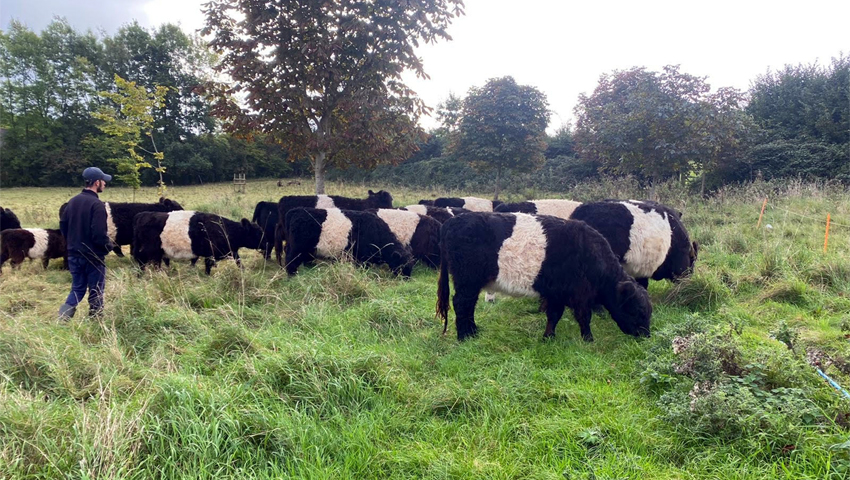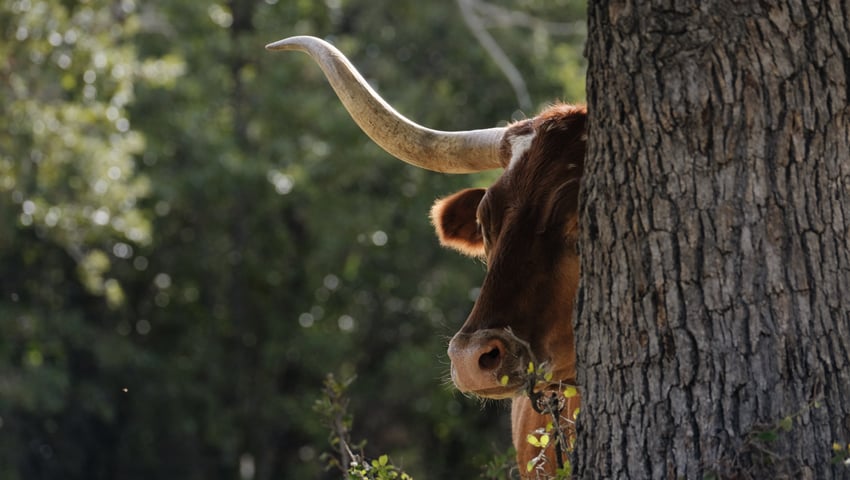Article by Huw Evans from Three Pools farm
Last week I attended the Welsh Government’s Sustainable Farming Scheme (SFS) consultation roadshow. While England cracked on with introducing the next generation of agricultural subsidies post Brexit, the Welsh Government has taken its time. They’re looking to implement the final scheme starting in 2025. The proposals definitely ask a lot more of farmers than the current subsidy requires. It was interesting to note that the majority of the farmers in the room came across as largely against the scheme.
In my opinion, what they’re suggesting looks pretty good. In short, there’s a selection of ‘universal actions’ that land managers must complete. Beyond that they can achieve extra funding through optional actions that go further, or collaborative actions with neighbours. I say land managers, as the scope of what land will be able to be claimed on goes beyond just farmers (I’m talking woodland). The scheme is designed with a whole farm outlook, looking to achieve four main goals; food production, climate change mitigation, resilient ecosystems, and preservation of rural culture and Welsh language.
The point that stood out for farmer backlash is the requirement for each farm in Wales to put 10 per cent of land into woodland (with some flexibility if there’s a significant area of other valuable habitat i.e. peat).
I hadn’t quite appreciated how much farmers don’t want woodland. I think it takes a fundamental mind shift to understand why having trees on farms is important. They have value, they don’t only “take land out of productive farming”.
Here at Three Pools we have 17 per cent of the farm in woodland. We had 13 per cent of the farm in woodland, we then planted another 4 per cent. This is specifically woodland, where the subsidy is looking at tree cover; so, in field and hedgerow trees count.
We will probably end up planting more trees, just in more of an agroforestry/silvopasture design rather than woodland. There are multiple reasons we wanted to plant more tree cover. Primarily for livestock benefits, food production, biodiversity and carbon.

Shelter and shade; strategic planting of woodland provides shelter from winds. As we outwinter our livestock, it is important that there are areas they can find which protect them from winter weather. Exposure to weather increases energy demand, and so requires more feed. In the summer months, more trees provide more shade, which is important for animal welfare, particularly given climate change making the summers hotter. At the moment there is no subsidy that covers existing woodland, livestock are meant to be excluded. Keeping stock in woodland can be good for the animals, and can be good for the woods; if managed correctly. Strategic planting can bring improvements to animal welfare.
Livestock also eat trees. Tree leaves are great for supplementing trace elements. This saves time and money, and boosts productivity. At the moment trace elements such as cobalt have to be mined (the Democratic Republic of Congo is the leading source), processed into a bolus or drench and given to the animal… Or you could let them eat some leaves… Some species of tree have anthelmintic properties; meaning they act as a wormer. More work needs to be done on this to determine what dose of leaves is needed to fully replace the use of chemical wormers. The environmental benefit of this is fairly clear, you won’t be killing the insects/dung beetles in the field. Fruit and nut production can also be integrated. Pigs can then clear up underneath after harvest.
At certain times of year we keep the pigs in the woods. Autumn is best as this is when the trees are dropping their seeds. This provides a valuable food source. It’s much easier to have the pigs collect all the seeds, then eat the pig, then to pick all the seeds ourselves. The same can be said for squirrels. Pigs in woods disturb the soil, opening up ecological niches and increasing biodiversity – that’s the theory. The art is on managing how much of an impact they have. Keep pigs out of woods in the spring as they will disturb spring flowers, which are ecologically important.
Biodiversity is greatest at the edge between two habitats; the ‘edge effect’. Biodiversity is good for environmental and ecological resilience, to climatic or chemical impacts. Having a blend of woodland, trees and pasture has greater biodiversity than just pasture alone. This will support the wildlife on the farm. Having diversity keeps the wildlife in balance, it stops one species from becoming a pest. This could be gastrointestinal type worms – which would reduce livestock productivity – or flea beetle – which would reduce arable productivity. It’s the wildlife that cycles nutrients and makes them bioavailable for plants. Things eating things and pooing. Their poo feeds the soil microbes, which hold minerals in a form that can be more easily taken up by plants. If the grass that livestock are grazing has access to bioavailable nutrients, the grass will grow more and it will be healthier and more nutrient dense grass – better for the livestock. It will also not need applications of fertiliser and lime to keep it growing. Plus it will ideally find a healthy balance and have fewer ‘weeds’ while supporting more wildflowers – which will have health benefits to livestock (anthelmintics, trace elements…). What I’m saying is trees can improve pasture quality.
In the Welsh context, Wales is home to some of the remaining fragments of temperate rainforest. Temperate rainforests are extremely rare globally, the UK has just a small fraction of its temperate rainforests remaining. Wales is home to much of the area that is suitable for temperate rainforests. We support maintaining the Amazon but won’t look at restoring our lost rainforests? It’s a bit of a double standard. I hope I don’t need to explain why restoring rainforests would be valuable to society. Read The Lost Rainforests of Britain by Guy Shrubsole if you want to know more.
Carbon. We had a carbon audit done [by Agrecalc], we sequester 227 per cent more carbon than we emit each year. Largely through our woodlands and hedgerows. I’ve written about this before.
It’s important, except it’s not actually, in some ways. At some point someone’s going to come up with a system where you can sell the carbon in a coherent way. At the moment there’s pressure to sell it on a lifetime of the woods basis; which could mean at some point you will have to start buying back carbon credits if your farming system changes. For us, we’re not selling our carbon as we’d rather see people emit less carbon rather than justify it based on the fact that we planted some trees. At the current rate of carbon emissions, Earth is still on course for catastrophic climate breakdown with the potential to see the collapse of global society. This last year, global temperatures have been above 1.5C for the whole year; breaking the limit which scientists said would limit some of the worst potential consequences. But, if a farmer wanted to justify woods, based on losing land from ‘productive farming’ there’s a financial instrument there to make the woods economically ‘productive’.
I’m aware I’ve essentially dismissed farmers’ concerns about food production so far. So let’s talk about it. Britain doesn’t produce enough food, it can’t feed itself. If something serious occurred, we would run out very quickly. At the point of planting trees, until it’s grown into something productive, we are taking land out of productivity. For most farms, farming isn’t the most profitable enterprise. Taking land out of being actively productive will reduce the current revenue that a farm is able to generate. This does make it more difficult for farmers to support themselves and their families.
The counter argument to ‘Britain doesn’t produce enough food’, is that Britain doesn’t produce the right food.
We produce plenty of grains that go into ultra-processed food, or intensively reared chicken and pig units. Which aren’t a healthy contributor to people’s diets. Plus intensive units are a source of environmental pollution and can be considered unethical – so giving meat production a bad name. To produce more food to feed itself, good horticulture (vegetable growing) is something we as a country need.
How do you maintain rural communities if farmers aren’t able to keep farming as their business becomes unviable? For us, it’s tourism. We run events and this gives us the financial bridge to take land out of productivity, temporarily, while we wait for perennial crops (trees, fruiting shrubs and grape vines) to reach productivity.
I appreciate not every farm in Wales is suitable or wants to host a couple hundred people, playing loud music, until late, most weekends. More needs to be done to support farmers through the transition phase as trees grow.
The reality is the SFS payment is unlikely to even be as much as the current subsidy, so it’s unlikely to be enough to support people through transition. Plus, there are concerns as to how long the funding will continue; there isn’t a guarantee it will be continued until the trees are productive. The funding mechanism remains more of a problem than the trees themselves.
Land sparing vs land sharing is another debate that tree planting slips into. The argument is that when producing food, specifically protein through livestock production, in a land sparing system, it takes up a lot of land. There isn’t enough land on earth for us to take this approach. That is if consumption levels remain where they are. In order to make up for losing productive land here, someone somewhere else will cut down trees to make up for it. My point, however, is that creative use of trees does increase productivity and environmental performance. As a topic this needs its own blog.
So trees, they’re good, yeah? There’s more things I could say as to why they’re good and why they are important to a healthy, functioning farm system. What set me off was farmers being so averse to having 10% trees on their farm. It’s bold leadership from Welsh Government, I back it.
Leadership doesn’t happen often in government. The question is will the payments be enough to actually support the change? Trees are an opportunity. They’re not asking for one big block in the middle of the farm. Make use of agroforestry and silvopasture, make use of fruit and nut production, make use of shelterbelts, put in some pretty specimen trees that feel good to look at.
Farming systems can be more productive, profitable, resilient and ecologically functional when trees are included. In essence, it is thoughtful planning around the use of perennial species (trees) that is the basis of permaculture.
